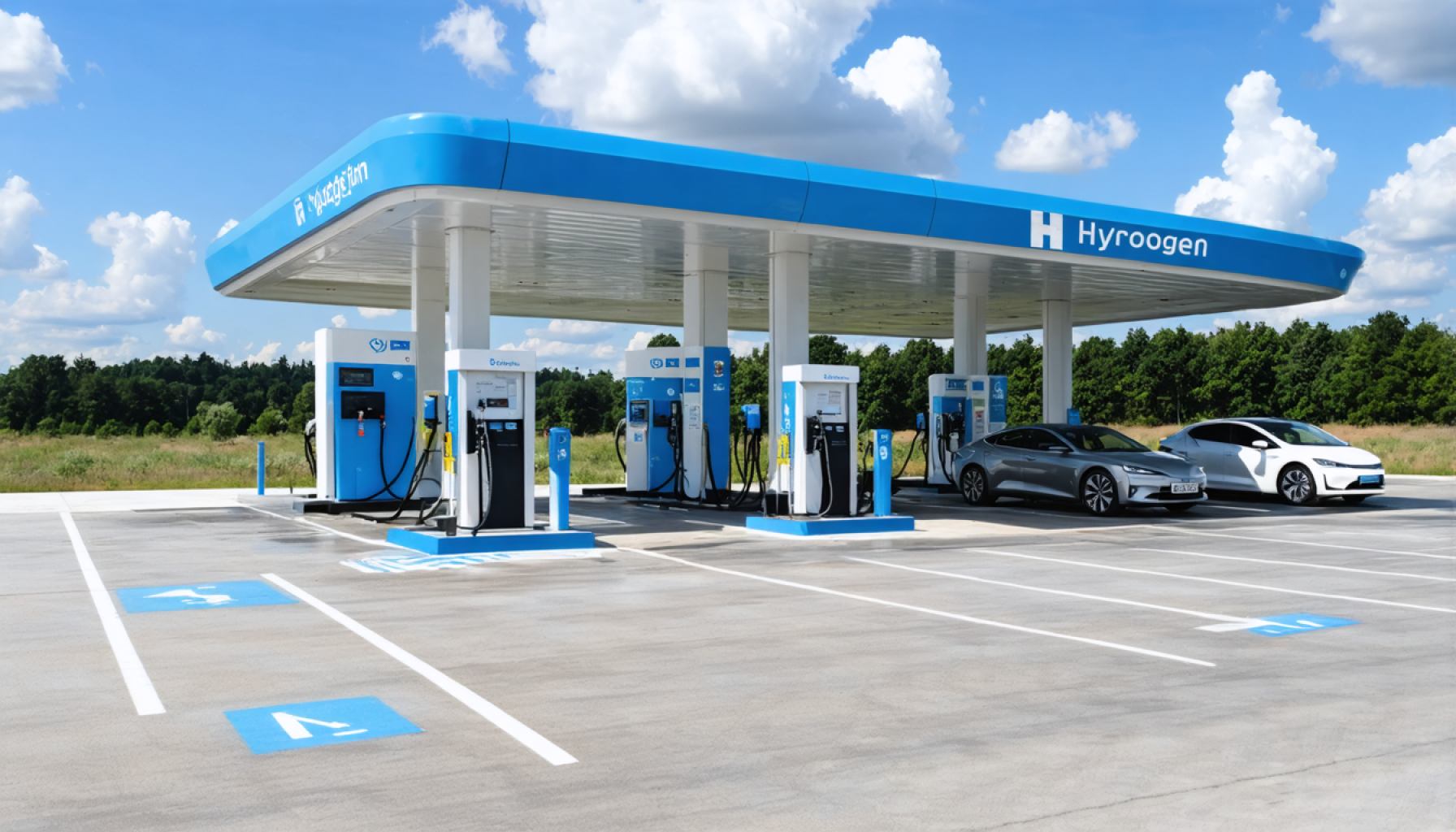- Hydrogen fueling stations are projected to grow from a $0.5 billion industry in 2024 to $1.8 billion by 2030, reflecting a shift towards cleaner energy solutions.
- These stations are essential for supporting hydrogen fuel cell vehicles, significant in advancing zero-emission transport.
- Global government policies and regulations are driving the demand for hydrogen infrastructure.
- Innovation is pivotal, with mid-sized stations optimized for minimal disruption and increased efficiency.
- On-site hydrogen production enhances safety and reduces emissions by minimizing transportation needs.
- EPC companies play a crucial role in developing technologically advanced and environmentally friendly stations.
- The growth of hydrogen fueling stations represents a pivotal step towards sustainability, promising cleaner air and quieter urban environments.
The global drive to combat pollution and embrace cleaner energy takes a promising turn with the rapid rise of hydrogen fueling stations, expected to leap from a $0.5 billion industry in 2024 to an impressive $1.8 billion by 2030. These stations, akin to the guardians of our zero-emission future, ensure that vehicles glide through streets without spewing harmful pollutants, heralding a significant shift toward sustainability.
These stations quench the thirst of hydrogen fuel cell vehicles—the silent warriors of the zero-emission revolution—whose whispering engines and clean exhalations symbolize a new dawn in urban transport. Governments worldwide, from North America’s bustling cities to Europe’s historic locales, recognize the necessity of this infrastructure. Aggressive policies and forward-thinking regulations propel the demand for these environmental bastions.
However, it’s not just regulation that’s fueling this growth; innovation takes center stage. The smartest minds in engineering are crafting mid-sized stations that epitomize efficiency. These robust installations strike a balance, optimized for regions eager for change yet weary of large-scale disruption.
Meanwhile, on-site production emerges as a beacon of efficiency and safety, demolishing logistical hurdles and cutting emissions associated with transportation. Picture a world where hydrogen springs forth at the point of demand, reducing carbon footprints and fortifying energy security.
Engaging EPC companies ensures that each station stands as both a technological and environmental marvel, finely tuned to meet society’s growing thirst for change. Embrace this evolving network; each station is a step closer to cleaner skies and quieter streets. With hydrogen stations leading the charge, the future looks undeniably greener.
Hydrogen Fueling Stations: Powering the Path to a Cleaner Future
How-To Steps & Life Hacks: Building a Hydrogen Station
1. Site Selection: Choose a location with easy access to major roads and existing energy infrastructure. Consider proximity to hydrogen fuel cell vehicles (FCVs) and potential demand.
2. Permitting & Regulations: Secure necessary permits, focusing on environmental impact assessments and safety regulations. Engage with local authorities early to streamline the process.
3. Design & Engineering: Collaborate with EPC (Engineering, Procurement, and Construction) firms to design a station that maximizes safety and efficiency. Utilize innovations like modular designs for flexibility.
4. On-Site Hydrogen Production: Incorporate electrolysis systems to produce hydrogen on-site, minimizing transport-related emissions and costs.
5. Technology Integration: Install advanced storage systems and dispensing technologies to ensure rapid refueling. Monitor systems with IoT-enabled sensors for maintenance and efficiency.
Real-World Use Cases & Market Applications
– Public Transport: Hydrogen buses in cities like Seoul and Hamburg demonstrate significant reductions in urban pollution.
– Long-Haul Trucking: Companies like Nikola and Hyundai are investing in hydrogen trucks that benefit from quick refueling times compared to electric battery alternatives.
– Maritime Applications: Hydrogen is being explored as a clean fuel source for ships, reducing maritime emissions significantly.
Market Forecast & Industry Trends
According to Allied Market Research, the hydrogen fueling station market is projected to grow substantially, from $0.5 billion in 2024 to $1.8 billion by 2030. Key drivers include government incentives, decreasing costs of renewable hydrogen, and advances in fuel cell technology.
Reviews & Comparisons
– Hydrogen vs. Electric Vehicles: While electric vehicles lead in market presence, hydrogen offers faster refueling and longer range benefits, especially important for commercial fleets.
– Station Comparison: Japan leads the pack with over 150 hydrogen stations, while Europe and the USA are rapidly expanding their networks.
Controversies & Limitations
– Cost Concerns: Hydrogen production and infrastructure still face high costs compared to fossil fuels, posing a challenge for widespread adoption.
– Safety: Hydrogen’s flammable nature necessitates rigorous safety standards, raising construction and operational costs.
Features, Specs & Pricing
– Station Size & Capacity: Mid-sized stations typically have a capacity of 200-1,000 kg of hydrogen daily, catering to around 50-100 vehicles.
– Cost: Construction costs range from $1 million to $4 million, heavily dependent on the scale and technology used.
Security & Sustainability
– Security Measures: Implement safety protocols, including automated emergency shut-off systems and continuous monitoring for leaks.
– Sustainability Initiatives: Prioritize the use of green hydrogen produced via renewable energy (solar, wind) for a zero-emission lifecycle.
Insights & Predictions
Increased government policies supporting green hydrogen initiatives may result in improved technologies and decreased production costs by 2027, potentially making hydrogen a competitive alternative to fossil fuels.
Tutorials & Compatibility
– Fuel Cell Vehicles: Users should familiarize themselves with handling hydrogen dispensers, similar to traditional gas pumps but with an added safety twist.
Pros & Cons Overview
Pros:
– Fast refueling times
– Long range
– Low emissions
Cons:
– High infrastructure costs
– Limited availability
– Flammable and requires stringent safety protocols
Actionable Recommendations & Quick Tips
– Invest in Hydrogen-Ready Infrastructure: Cities should begin integrating hydrogen stations into urban planning to meet future demands.
– Education & Training: Increase awareness and training for both the public and professionals on handling hydrogen safely.
For more information about hydrogen technologies, visit U.S. Department of Energy.
Embrace the hydrogen revolution and contribute to a sustainable future!


